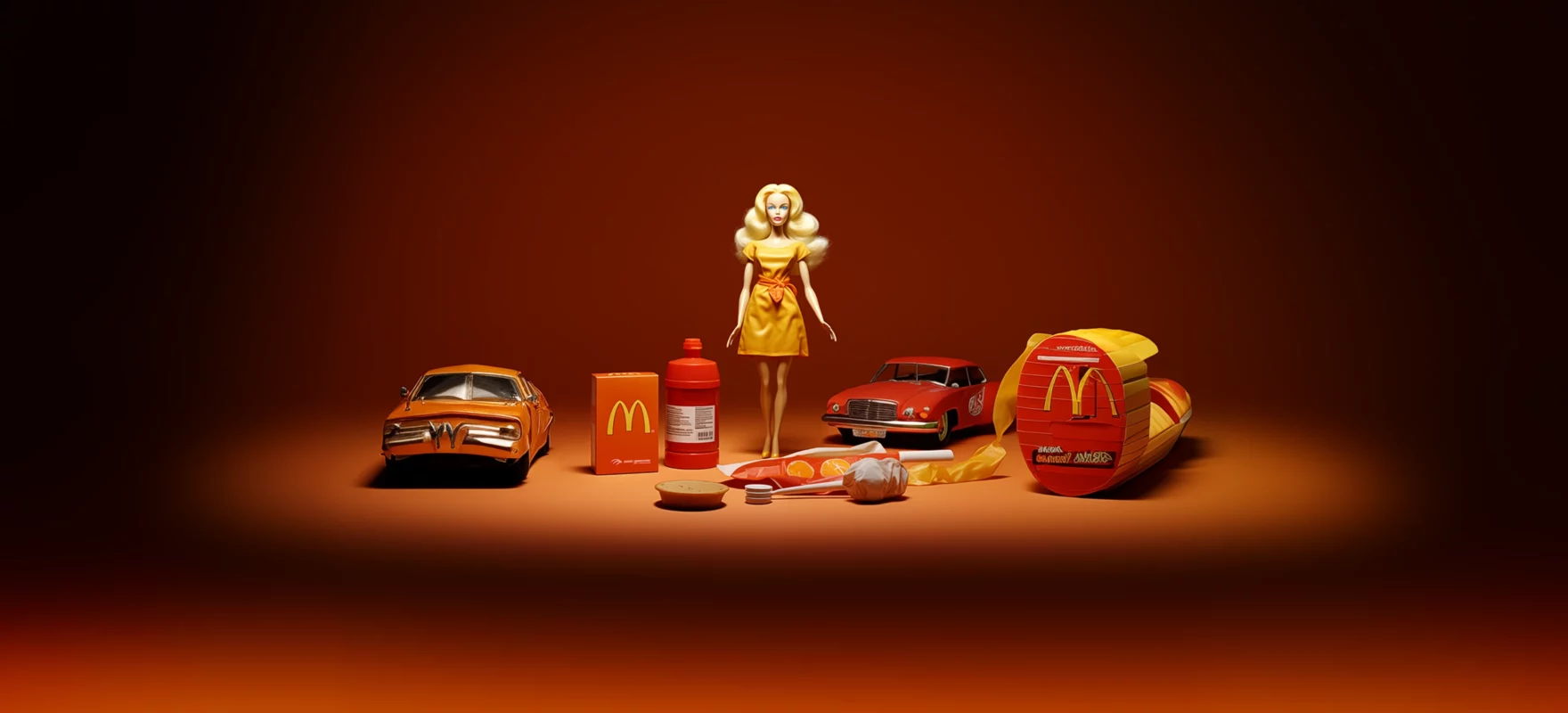Nico Bryan, December 2023
Brand Strategist, Nico Bryan presents Heavenly’s Top 5 takeouts from this year’s Most Contagious conference.
In early December, a few members of the Heavenly team had the pleasure of attending the Most Contagious conference in Islington, London. It was a day packed full of insight from brands, advertising agencies and academics. There was a lot of content to get through in the day with approximately 6 hours of talks and presentations, so we’ve picked what resonated most with us and present them to you here…
‘I am X, and I believe Y, therefore I do Z.’
- Capitalise on culture. Don’t act for average. (Marcus Collins)
Rene Descartes once posited: ‘I think, therefore I am.’ But does this principle need to be revisited in marketing? Marcus Collins of Michigan University argues that consumers don’t buy because of what the product is, but because of who they are. To any given person, a cow is a different thing: a deity, a dinner, or leather. But in reality, a cow is all of those things, dependent on how you self-identify: ‘I am X, and I believe Y, therefore I do Z.’
So, the learnings are twofold: the first is that consumption is inherently cultural. The second, subsequently, is that brands should speak to sub-cultures, before sub-cultures become the norm. Acting for average speaks to no-one.
‘…they decided to focus on who they are not.’
- Not why, but why not (Fiat)
Simon Sinek has always stressed that marketers and brands should ‘start with why.’ At Fiat, this year they asked ‘why not?’ Rather than explain who they are as a brand, they decided to focus on who they are not.
In their Operation No Grey campaign this year, the Italian car manufacturer quite literally painted on a different canvas to their competitors. The premise of the campaign was simple, Fiat pledged to stop painting their cars grey – which is the most popular palette in the automobile industry. They broke a series of campaign conventions along the way, too: they showed their product static, and proceeded to ruin said car and product by dunking it (and their CEO!) in 10,000 litres of paint. It’s joyous, it’s different, it’s Fiat. The learning? Your brand identity is defined as much by what you aren’t, as it is by what you are.
- Simplicity isn’t simple (McDonalds)
You might have seen McDonald’s eyebrow raising advert this last year. In collaboration with Leo Burnett, McDonalds’ #RaiseYourArches advert drew global attention with what seemed like such an astonishingly simple premise. Eyebrows: which look like arches; which look like the MacDonalds logo; very clever. And though this is true, the process took far longer than you’d think.
For the last year, McDonalds’ campaigns centred round the premise of ‘Everyone has a McDonalds in common,’ but this was losing its appeal. In asking how McDonalds could find fresh meaning in the brand, McDonalds returned to their audience by taking a step back, and embarking on year-long customer research campaign. The findings revealed an almost universal feeling among McDonalds customers: the suggestion of getting McDonalds outweighed the joy of having the McDonalds. And, when hungry, this feeling often materialised in an unspoken language: an emoji, a look, a raising of the eyebrows. The points are these: listen to your audience, and understand that simplicity isn’t easy. As Winston Churchill once writ, “I didn’t have time to write a short letter, so I wrote a long one instead.” The same can be said for branding, as this McDonalds case study shows.
As Ruth explains in Barbie: ‘Ideas live forever.’
- Go then grow (Heinz)
As we further enter the digital age, authenticity is something consumers crave – not least Gen Z. Heinz has adopted this mantra by leaning into the imperfections of their iconic ketchup. This year, to help their customers to extract their ketchup faster, Heinz slanted the label on their packaging to 37 degrees, the optimal pouring angle. Because sometimes, a brand’s imperfections are part of its identity.
But the Heinz brand is also so recognisable that it doesn’t need to be perfect, especially if it’s authentic: in 2021 they asked customers to draw a bottle of ketchup, and they all drew imperfect bottles of Heinz. In 2023, they asked the same of AI, and guess what? More imperfect Heinz bottles. Because it Has to be Heinz.
And it applies to the use cases, too. For eons, Americans have complained about hotdogs and buns being sold in different quantities. So, The Heinz Hot Dog Pact was made to do something about it. The pact went viral, and Heinz announced a partnership with Wonder Buns to give the American public what they wanted: 10 Wieners; 10 buns. And – much like a hotdog – Heinz was the sauce that brought it all together. Sometimes imperfections are the perfect sales tool.
- Purpose repurposed (Barbie)
You might have noticed Barbie cropped up quite a lot this year, not least following the success of the self-named feature length film, Barbie, which earned $1.44bn in the box office. As part of the promotion of the film, Barbie partnered with over 160 other brands – from Zara to Burger King – and sparked a cultural phenomenon. This is crazy to think, given that a decade ago the Barbie brand was fading for failing to represent the modern-day young girl.
Barbie’s bounce back wasn’t an overnight thing. Rather, the brand decided to return to it’s original purpose, to help young girls to reach their limitless potential. And this first started by asking ‘if we’re going to design Barbie today, what would she look like?’ Now, consumers can enjoy over 175 variations of Barbie, and The Barbie Dream Gap provides educative grants to girls across the world.
As Barbie demonstrates, the answers to the brand troubles were always there, and were as pertinent as ever. Their purpose just needed to be repurposed. As Ruth explains in Barbie: ‘Ideas live forever.’
